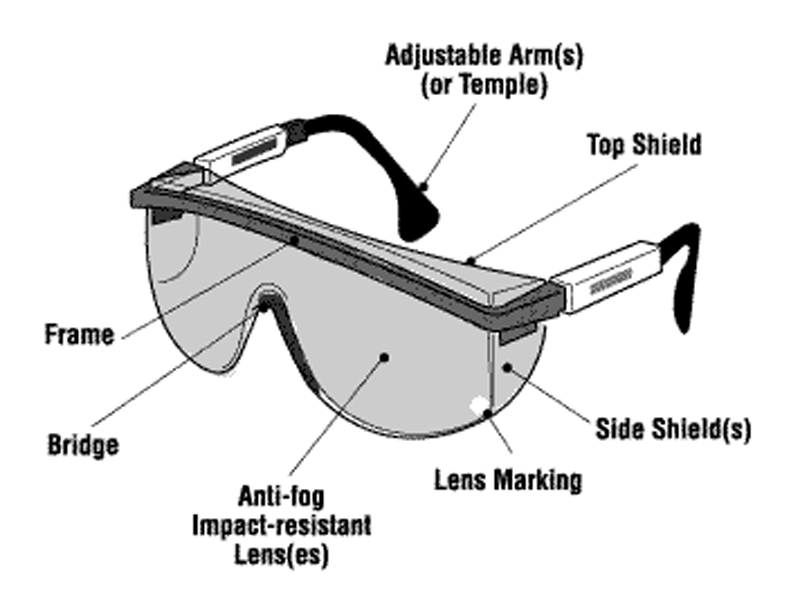Selecting the right safety glasses is crucial to ensure adequate protection, comfort, and performance in your specific environment. Here’s a detailed guide on how to choose the right safety glasses:

1. Identify the Hazards
Mechanical Hazards:
- Impact Protection: If you’re working in an environment with flying debris or particles, choose safety glasses that meet at least the F (low energy impact) standard of EN 166. For higher risks, consider B (medium energy impact) or A (high energy impact) ratings.
Chemical Hazards:
- Splash Protection: For environments with chemical splashes, select goggles that provide a tight seal around the eyes.
- Vapor Protection: If there’s exposure to harmful vapors or gases, choose goggles designed to prevent ingress of these substances.
Radiation Hazards:
- UV Protection: If working outdoors or with sources of UV light, select lenses with UV filters. Look for markings indicating UV protection according to EN 166.
- Infrared Protection: For tasks involving infrared radiation, choose glasses with appropriate IR filters.
- Welding Protection: If involved in welding, use safety glasses or goggles with the appropriate shade number to protect against intense light and radiation.
Dust and Fine Particles:
- Dust Protection: In dusty environments, choose goggles or glasses that offer a seal to keep out fine particles.
2. Consider the Environment
Indoor vs. Outdoor:
- Indoor Use: Clear lenses are typically sufficient for indoor environments.
- Outdoor Use: Tinted lenses or photochromic lenses (that adjust to changing light conditions) are beneficial for outdoor use.
Lighting Conditions:
- Low Light: Amber or yellow-tinted lenses can enhance contrast in low-light conditions.
- Bright Light: Gray or mirror-coated lenses can reduce glare and provide comfort in bright conditions.
3. Evaluate Optical Clarity
Optical Class:
- Class 1: Suitable for continuous use; provides the best optical quality.
- Class 2: Suitable for intermittent use.
- Class 3: Suitable for occasional use; may have minor optical distortions.
4. Check for Comfort and Fit
Adjustability:
- Look for adjustable features like temple arms and nose pads to ensure a snug and comfortable fit.
Weight:
- Lighter glasses reduce fatigue, especially during prolonged use.
Ventilation:
- For goggles, ensure adequate ventilation to prevent fogging.
5. Verify Compliance and Certification
Markings:
- Check for EN 166 markings to ensure the glasses meet the necessary safety standards.
- Look for additional markings indicating specific protections (e.g., UV, IR, impact resistance).
6. Specialty Features
Anti-Fog and Anti-Scratch Coatings:
- These coatings can enhance durability and usability, especially in humid environments or when transitioning between different temperatures.
Prescription Lenses:
- If you need corrective lenses, look for safety glasses that can accommodate prescription inserts or have built-in prescription lenses.
7. Assess Durability and Maintenance
Material Quality:
- Ensure the glasses are made from durable materials such as polycarbonate or Trivex for impact resistance.
Ease of Maintenance:
- Choose glasses that are easy to clean and maintain to ensure longevity and continued protection.
8. Consider Style and Personal Preference
Design:
- Choose a design that you are comfortable with and that you are more likely to wear consistently.

